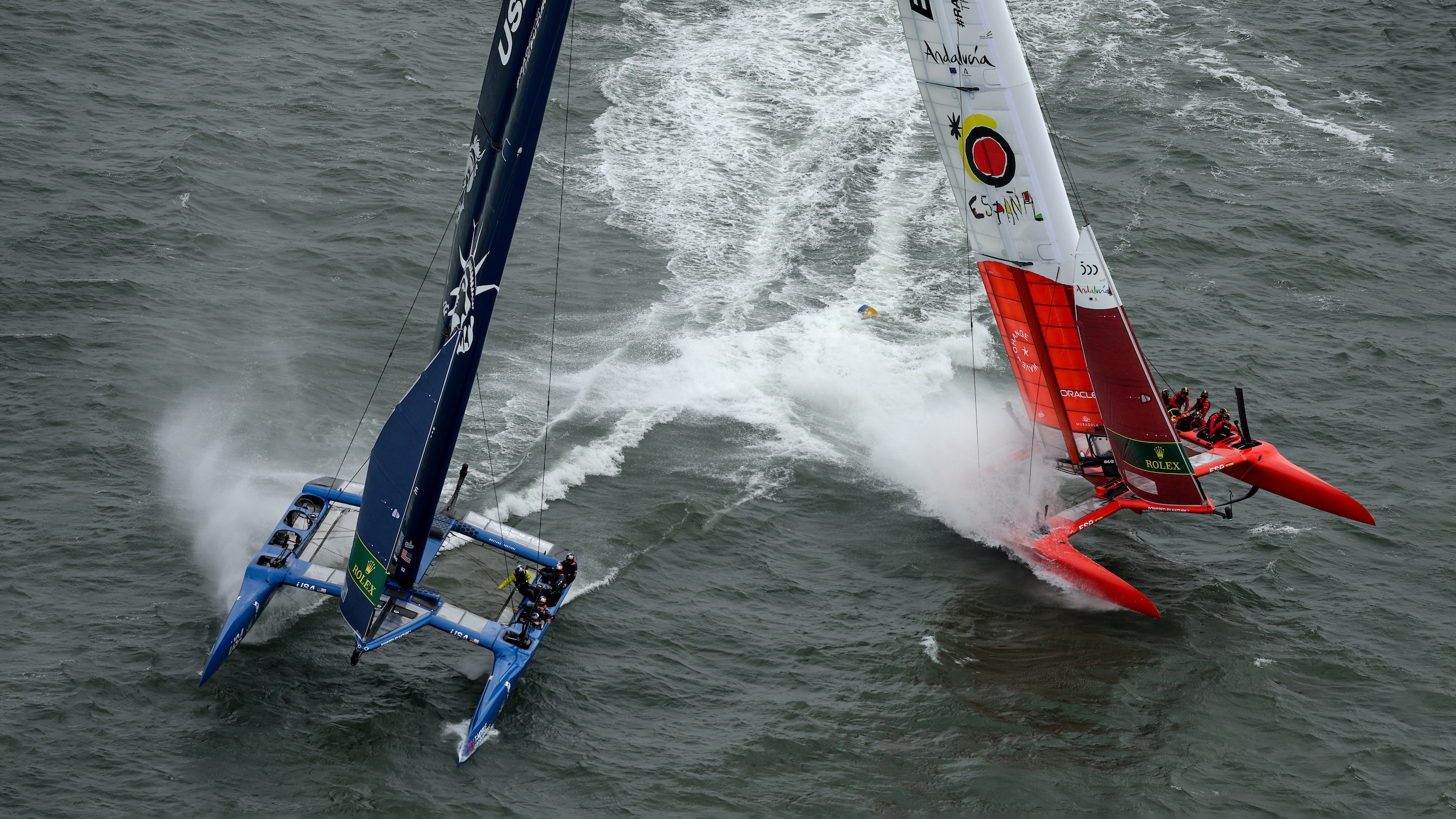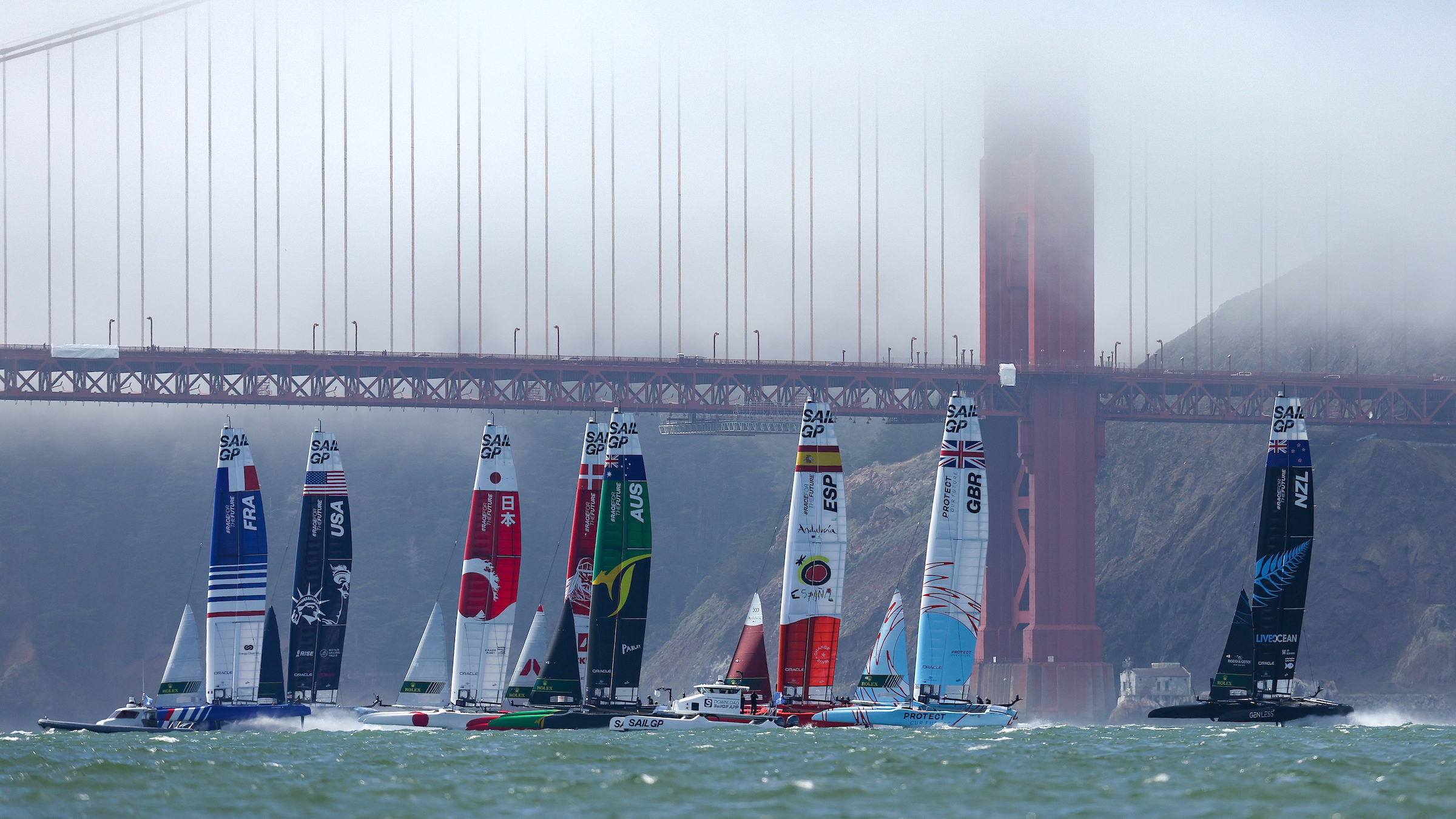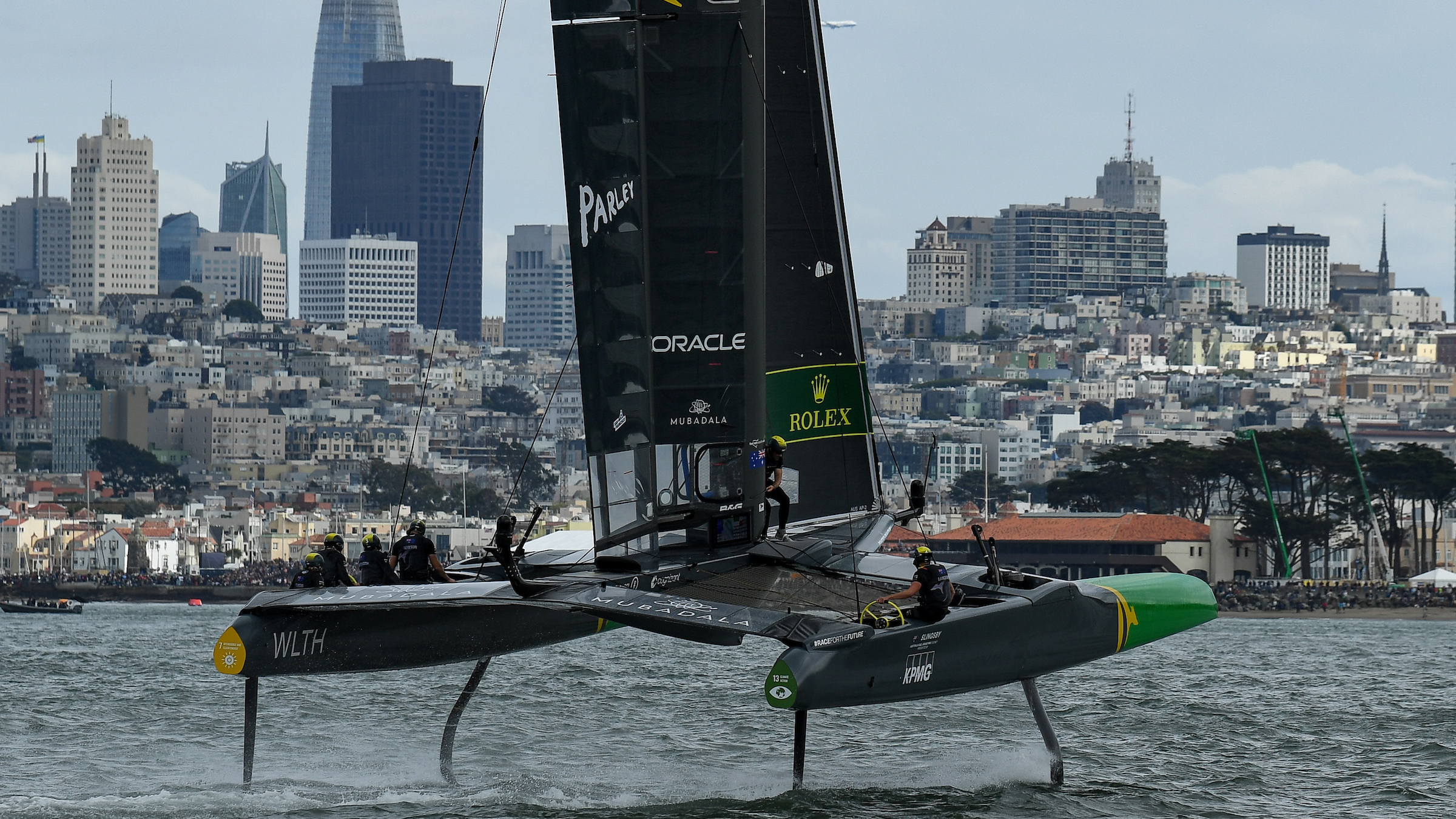
Competitive sailing isn't something you’d conventionally associate with super high tech innovation. But there’s something brewing in this exhilarating, wave-carving sport that might just change your mind. One competition in particular is taking advantage of cutting-edge technology that isn’t only transforming the world of sailing but could potentially revolutionise the nature of sports in general and how people compete in them, forever. At the helm of this drive? Sustainability.
Yes, it sounds a little far-fetched. I wouldn’t have believed it either. But I went all the way to San Francisco with SailGP - the organisers of one of the world’s biggest international sailing competitions - to get a glimpse behind the scenes of what’s happening in this sport and how innovation is playing a key role to ensure the end goal sustainability is the focus, not just the winning team.
About SailGP and the race
San Francisco is a city with a long history of hosting all sorts of boat races. Its large bay makes it a perfect venue for a sailing competition, with consistently strong winds and an accessible waterfront that gives people an up-close view of the action. It’s no wonder then, that SailGP used it for the launch of the second season of its new sustainability-focused leaderboard, the Impact League.
Tracking the positive actions international sail teams make to reduce their overall carbon footprint, the Impact League was set up as a response to the risks climate change is imposing on our environment. It’s hoped it will help accelerate inclusivity in sailing while showcasing how sustainability and positive social actions can be at the heart of sports.

SailGP claims this makes it the first sport to rank its own teams based on sustainability action and offer a monetary award (of a whopping $100,000) for the winning team.
“By 2050, over 570 low-lying coastal cities, such as Plymouth, Saint-Tropez and Sydney, will face projected sea level rise by at least 0.5 meters, putting more than 800 million people at risk from the impacts of rising seas, extreme weather and storm surges,” the organiser says.
“To mitigate this threat, the world of sport needs to come together to create a new ‘sustainable-normal’, where action on impact is not an optional extra but an intrinsic part of the status quo.”
Sign up to the T3 newsletter for smarter living straight to your inbox
Get all the latest news, reviews, deals and buying guides on gorgeous tech, home and active products from the T3 experts
By making sustainability a competitive metric, SailGP hopes to drive competition and innovation that delivers benefits beyond sports.
“We want to harness innovation in the marine industry to scale new technology to achieve our mission of becoming the world’s most sustainable and purpose-driven global sports and entertainment platform [while making] an impact that will encourage the world of sport to follow our lead.”
The goal is to see the Impact League’s principles and integrity being implemented by other sports to encourage them to take action.
The league works via a set of social and environmental sustainability criteria, with each team awarded points based on their fulfilment, ranging from pioneering new technologies focusing on clean energy solutions and removing all single-use plastics, to diversity and inclusion and using the team's voice for good. After each race, the teams - comprising the countries Great Britain, USA, France, Spain, Japan, Canada, Australia, New Zealand, Switzerland and Denmark - are externally audited and scored by an overall leaderboard.

How they are using tech
So how exactly is SailGP harnessing tech to deliver sustainability across its events? I got an exclusive peek at some of the innovations making that possible at the SailGP Technical Area, or “tech base” during a practice run before the competition’s first race day. This is where the teams prepare for the final and make any additional updates or alternations to the cutting-edge F50 catamaran race boats before they get craned into the ocean.
These boats are perhaps the most impactful thing helping to nurture sustainability in all corners of the competition. They’re (what SailGP calls) “100% powered by nature” through the use of a Tesla Powerwall battery system, which is charged via a solar panel-powered charging container that travels to each event.
Even the on-water support boats, which follow the races to offer medical assistance if needed as well as filming and spectating, are becoming greener, SailGP’s head of technology, Warren Jones, tells me in an interview. He explains that the company transitioned 11 boats to electric propulsion motors for the start of the 2022 race season to reduce their carbon impact.
“The ambition is to have the on-water support fleet 100% powered by nature by 2025, removing the equivalent of 175 cars from the road and helping to lead a clean energy revolution in the marine industry,” he says.
Being such a huge event, you’d think the logistics and equipment needed to run and broadcast it would make it impossible to do sustainably. But it’s exactly this that’s a massive focus for SailGP. They’ve already done plenty to make these ambitions greener, especially when compared to other sports.
The biggest difference was made by making broadcast, umpiring and race management operations - which span 175 territories - remote, coordinating them through SailGP's production hub in London.
For the America’s Cup sailing event, for example, Warren explains how his team used to ship 28 containers around the world to support its broadcast operations. However, SailGP is now able to power the competition with just one container thanks to moving all operations onto the cloud. This has reduced SailGP's carbon footprint by 85,000 tonnes, making it the first carbon-positive sports and entertainment property.
“Virtually, everything we now do is in the Oracle Cloud using data centres in London powered completely by renewable energy,” Jones says. “On top of that, we don’t need to have around 100 people travelling. They can stay back in London with their families and use the same equipment for each event, so it’s more consistent.”
This cloud is particularly important as data transfer has a huge responsibility when it comes to the success of the competition.

“There are nine boats on the water, each with two cameras which all-in-all generate around 14 billion data requests - and that’s just in one afternoon,” Jones adds.
These requests are generated in an autonomous database and are used to power data-driven insights and augmented reality graphics in SailGP’s broadcast. This means it’s able to create nifty things like project a virtual racecourse over the water so the viewer can understand what’s happening.
Antennas on the wings of each boat have a big part to play here, too, sending telemetry, voice and video data from around 30,000 sensors via 5G to the shore, where it’s then transmitted by fibre to the data centres in London. This information also helps identify anomalies on the boats, helping to save time, improve efficiency and reduce waste.
In the future, Jones says 5G will be a massive “game-changer” in how this data will be transmitted to and from the boat. He even believes such data will be made more accurate and accessible via wearables worn by the sailors.
SailGP has even thought about the recyclability of the race boats themselves, partnering with one of the world’s biggest carbon fibre recovery plants in the UK, ELG Carbon Fibre, to allow waste carbon fibre from the F50 race boats to be recycled and reintroduced into the manufacturing process for future seasons. This, it claims, will ensure a more responsible and reduced carbon manufacturing process.
Perhaps one of the most futuristic technological developments to be introduced into the competition, however, is the trialling of automated race markers. These innovative race marks are GPS positioned throughout the course and remote-controlled, which results in a need for on-water support fleet boats and therefore less damage to the seabed and carbon emissions.
A sport that’s about more than winning
While the Impact league is still a relatively novel competition, it’s already seen some significant and positive changes, especially in the behaviour of competing athletes. As a result of the dedicated focus the race has on sustainability, competitors have reduced the number of support team personnel travelling to races, which has reduced air miles as well as the transport to and from the airport and hotels. General waste during the events has also been reduced, for example, the Great Britain team has even removed single-use plastic waste from their race boat. Meanwhile, less energy is being used in the tents through energy monitors and smart meters and many sailors have even transitioned to vegan or plant-based diets during competition weekends. It’s clearly driving change and influencing people to think differently.

But this competition is potentially much bigger than a quarterly boat race. SailGP wants the Impact league to be a poster boy of what is possible; to make sustainability an official goalpost in the world of sports, which isn’t about big splashes but about creating a new frame of reference. By the end of 2023, it’s the organiser’s main goal to inspire another sport to follow in its footsteps; the creation of a blueprint for sustainable sporting event delivery and are looking to work collaboratively with other sporting organisations to deliver this on a global scale.
Could sustainability change the way sport is conducted forever? It certainly could if SailGP has anything to do with it.
Lee Bell is a freelance journalist & copywriter specialising in technology, health, grooming and how the latest innovations are shaking up the lifestyle space. From national newspapers to specialist-interest magazines and digital titles, Lee has written for some of the world’s most respected publications during his 11 years as a journalist.
-
 In the future, you might never have to take off your Galaxy Ring to charge it
In the future, you might never have to take off your Galaxy Ring to charge itA newly uncovered patent reveals Samsung is working on a wearable charger for its Galaxy Ring, and it makes a lot of sense
By Matt Kollat
-
 Google just added a new Gemini video creation tool I never knew I needed
Google just added a new Gemini video creation tool I never knew I neededGemini Advanced just added Veo 2 video generation
By Mike Lowe
